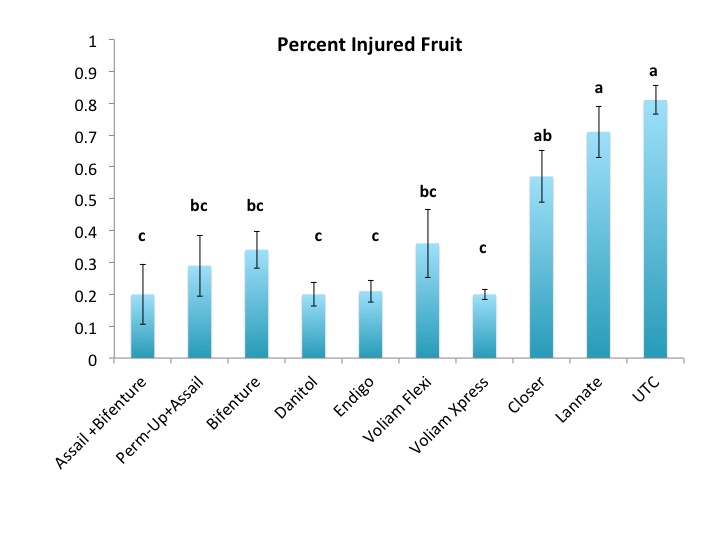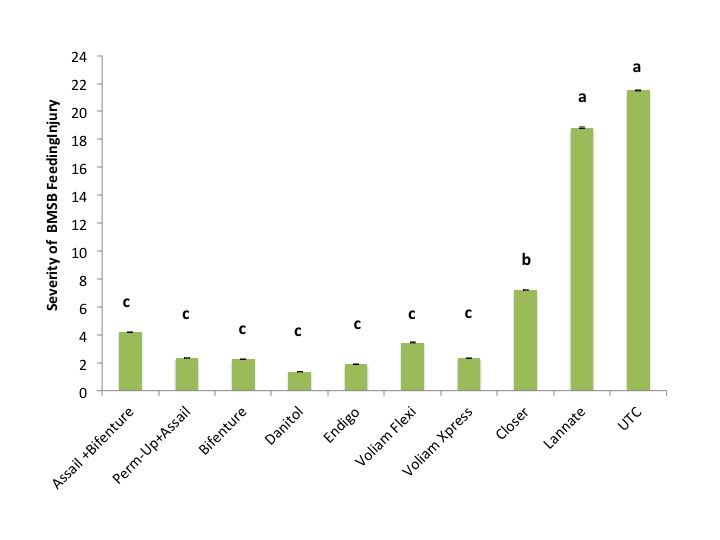For Commercial Vegetable Growers
Date: Tuesday, August 20, at 5:30 pm
Location: RAREC
121 Northville Road, Bridgeton, NJ (Upper Deerfield)
- Investigator Presentations and Research Plot Tours
- Bring your plant insect, disease, or weed samples for identification
- Pesticide recertification credits
Archives for July 2013
RAREC Vegetable Twilight and Research Tour
Are there Organic Alternatives to Glyphosate?
By Jim Murphy
We receive requests for information on “organic” alternatives to glyphosate (e.g., Roundup), especially for “trim” sprays on paved areas, sidewalks, skin surfaces on ball fields, etc.
The research on organic non-selective herbicides that are being marketed as replacements to glyphosate (for example, Roundup) is growing but it is much more limited that what you can find on more conventional herbicides; however, we have been evaluating some products. Our results indicate that these alternative products are short term “burn-down” products that have the ability to kill small immature plants. On the other hand, large perennial plants, while looking sick to dead soon after being spray, start to re-grow a week or so after being sprayed.
Therefore, we only recommend these alternative products for “trimming” applications on immature (very young, small plants vegetation. These products will be very disappointing if you practice an infrequent “trim” spray schedule (once or twice a year) that is treating a mixture of young and old plants. The immature plants are likely to die but you will find that the large perennial plants will survive and continue to grow once the product’s burn-down effect wears off. [Read more…]
Insecticide Trial Results for BMSB
We have been conducting numerous insecticide trials at RAREC against BMSB in peaches (Encore variety). In particular, we are evaluating the efficacy of a a single insecticide sprayed on a 10 day schedule to see if we can identify differences in effectiveness of selected insecticides throughout the season. I understand that growers will not (and should not) spray the same chemical throughout the season but it helps to isolate the effect each chemical. This is complimented by laboratory trials using field collected bugs. Because of limitations in the number of applications for certain chemicals I feel that this is an important component to developing IPM programs in NJ. We have evaluated Lannate LV, Bifenture (Sect 18 only), Bifenture+Assail (Sect 18 only), Assail+Perm-Up, Voliam Xpress, Voliam Flexi, Danitol, Endigo and Closer. Closer is a new neo-nicotinoid like compound (IRAC Class 4C) from Dow AgroSciences that is effective against green peach aphid. Because of its potential importance as a resistance management tool, we included this in the evaluation.
Our results thus far are interesting. We evaluate 3 ways:
- Percent of fruit with injury
- Severity of injury (ie. the number of feeding sites) and
- Mortality in the lab.
What we have seen suggests that Perm-Up+Assail and Danitol are more effective early season but Bifenture and Voliam Xpress have not decreased in effectiveness from end of May to now. This suggests that for those chemistries, it would be best to use Perm-Up or Danitol early in the season against the adults that are just emerging from diapause and migrating to the orchard. From the fruit injury data, our data strongly suggests that Lannate is not an effective compound against BMSB. Closer performed ok, there was a lot of fruit with injury, but the injury was not severe. Danitol, Voliam Xpress, Assail+Bifenture and Endigo had the least percent injured fruit. Keep in mind that Bifenture/bifenthrin is ONLY allowable on peaches and apples with a Sect. 18 which we do not have yet!! Danitol has been very variable in previous studies, but is performing well this season at RAREC. Voliam Flexi, Assail+Perm-Up and Bifenture alone also significantly reduced injury. Assail by itself has not performed well against BMSB in previous trials. Feeding severity was significantly reduced for all insecticides other than Closer and Lannate, although Closer was better than Lannate. Bifenture causes 100% mortality in the lab so my guess is that in the field it may not have as long of residual but once available, it will be a great addition to use and will cause mortality of BMSB present in the orchard.
Please keep in mind that the BMSB pressure at RAREC is very high! Always follow label instructions.
Potato Disease Forecasting Report 7-26-13
Potato Disease Forecasting Report 7-26-13 – Click to Download
We will be tracking DSVs for Late blight development and calculating P-days for initiating the first early blight fungicide application.
The first late blight fungicide application is recommended once 18 DSVs accumulate from green row. Green row typically occurs around the first week in May in southern New Jersey. An early season application of a protectant fungicide such as mancozeb (Dithane, Manzate, Penncozeb) or Bravo (chlorothalonil) as soon the field is accessible is suggested. Please be vigilant and keep a look out for suspect late blight infections on young plants. No late blight has been reported in our region to date.
Remember the threshold for P-days is 300! Once 300 P-days is reached for your location early blight fungicide applications should be initiated. Growers who are interested in using this model should chose the location above that is closest in proximity to their farming operation and should regularly check the Cornell NEWA website (http://newa.cornell.edu/) where this information is compiled from. Click on Pests Forecasts from the menu, select your weather station, and click on tomato diseases, set accumulation start date and a table of daily and total DSVs will be generated.
Tomato Disease Forecasting Report 7-26-13
7-26-13 Tomato Report – Click to Download
Disease severity values (DSVs) for early blight, septoria leaf spot, and tomato anthracnose development are determined daily based on leaf wetness (due to rainfall, dew) and air temperature.
On a daily basis DSV values can range from 0 to 4 where 0 = no chance for disease development to 4 = high chance for disease development.
DSVs are accumulated during the production season.Fungicide applications are based on an individually determined DSV threshold. The first fungicide application for the control of these three diseases is not warranted until 35 DSVs have accumulated from your transplanting date. After that, growers can base fungicide applications on different DSV thresholds.
Veg IPM Update: Week Ending 7/24/13
Vegetable IPM Report 7-24-13 – Click to View | Download | Print
Current Week’s Pest Maps – Available Maps for the week are highlighted


